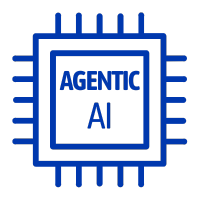Collaboration Software refers to digital applications designed to enable individuals and teams to work together effectively, regardless of their physical location. These tools facilitate communication, project management, document sharing, and joint problem-solving by providing a cohesive platform that supports real-time collaboration, task coordination, and streamlined workflows.
Key Benefits
-Enhanced Communication and Collaboration: Boosts interaction among team members irrespective of their physical location, leading to improved teamwork and productivity.
-Increased Efficiency and Productivity: Streamlines workflow processes by enabling simultaneous real-time updates, reducing email overload, and enhancing task management.
-Centralized Information Sharing: Acts as a single platform for storing, sharing, and accessing documents, minimizing the risk of data loss and ensuring information consistency.
-Improved Flexibility and Remote Work Enablement: Supports remote work by allowing users to access the system from any location and device, fostering a flexible work environment.
-Better Project Management: Facilitates tracking of project progress, deadlines, and team responsibilities, enhancing overall project management and delivery outcomes.
Related Terms
-Enhanced Communication and Collaboration: Boosts interaction among team members irrespective of their physical location, leading to improved teamwork and productivity.
-Increased Efficiency and Productivity: Streamlines workflow processes by enabling simultaneous real-time updates, reducing email overload, and enhancing task management.
-Centralized Information Sharing: Acts as a single platform for storing, sharing, and accessing documents, minimizing the risk of data loss and ensuring information consistency.
-Improved Flexibility and Remote Work Enablement: Supports remote work by allowing users to access the system from any location and device, fostering a flexible work environment.
-Better Project Management: Facilitates tracking of project progress, deadlines, and team responsibilities, enhancing overall project management and delivery outcomes.
References
For further insights into these processes, explore the following Zycus resources related to Collaboration Software:
White Papers
Master the UK Procurement Act 2023: Ensure Compliance & Drive Procurement Excellence

Filter by
Compliant Invoicing
Compliant Invoicing refers to the process of generating, submitting, and managing invoices in adherence with legal, regulatory, and contractual requirements.
Continuity Plan
A Continuity Plan is an organized set of policies and procedures designed to ensure that a company’s essential operations can
Cost Modeling
Cost Modeling in procurement refers to the analysis and estimation of the total cost of ownership of a product or
Contract Audit
Contract Audit is a systematic evaluation of agreements and related documentation to ensure compliance with contractual terms, identify discrepancies, and
Procurement Cycle
The Procurement Cycle refers to the end-to-end process through which an organization identifies its needs, sources suppliers, negotiates contracts, places
Procurement Master Data Management
Procurement Master Data Management is the disciplined approach to managing core, consistent procurement information, including supplier, product, and contract data,






















































